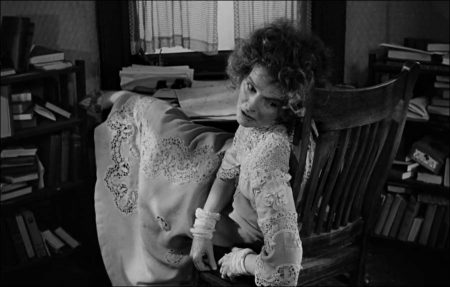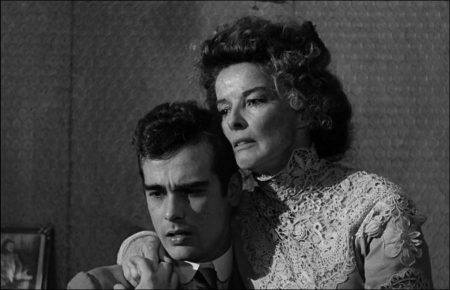Long Day’s Journey into Night movie storyline. One day in the early 20th century in the life of the outwardly “loving” yet dysfunctional Tyrone family – parents James and Mary, and their two surviving adult sons Jamie and Edmund – at their Connecticut seaside summer home is presented. Mary has recently been released from a sanatorium for addiction to morphine.
She got hooked on it during the difficult pregnancy with Edmund. As such, she secretly blames him for her addiction. Although Mary is purportedly clean, the male members of the family can’t help but believe that she is still getting her fixes when she is alone. Edmund, a mariner, also recently arrived home. They are all aware deep in their hearts that Edmund is suffering from consumption, and not a summer cold as they all say it is, as they await the official diagnosis.
James, formerly an actor, is a spendthrift despite having money. He, however, is not unwilling to spend money on whiskey or get rich quick schemes, largely buying what ends up being worthless real estate. Jamie largely blames his father for not spending the money early in their illnesses for Mary and Edmund’s health/medical problems.

Otherwise, Jamie has largely been aimless in his life. He has followed in James’ footsteps in becoming an actor solely because James gave him the opportunity, but places no effort in it as a career. In addition to these issues, all three male members of the family drink to excess. These family issues are played out as the long day turns into night.
Long Day’s Journey into Night is a 1962 American drama film adaptation of Eugene O’Neill’s 1956 play. It was directed by Sidney Lumet, and produced by Ely Landau, with Joseph E. Levine and Jack J. Dreyfus Jr. as executive producers. The screenplay was not adapted, but used directly from O’Neill’s play, the music score by André Previn, and the cinematography by Boris Kaufman.
It was shot at Chelsea Studios in New York City. The exteriors were shot on City Island. Producer Ely Landau did a version of The Iceman Cometh for TV. This impressed the widow of Eugene O’Neill enough for her to give him the screen rights to Long Day’s Journey. The cast and director formed a cooperative and agreed to work for a lower fee in exchange for a percentage of the profits. The film was reportedly shot for $435,000 over 37 days, two days over schedule. Lumet later wrote that the total budget was $490,000. The film has been restored and preserved by UCLA Film & Television Archive.
Long Day’s Journey into Night (1962)
Directed by: Sidney Lumet
Starring: Katharine Hepburn, Ralph Richardson, Jason Robards, Dean Stockwell, Jeanne Barr
Screenplay by: Eugene O’Neill
Production Design by: Richard Sylbert
Cinematography by: Boris Kaufman
Film Editing by: Ralph Rosenblum
Costume Design by: Sophie Devine
Set Decoration by: Gene Callahan
Makeup Department: Herman Buchman, Mary Roche
Music by: André Previn
MPAA Rating: None.
Distributed by: Embassy Pictures
Release Date: May 1962 (Cannes Film Festival), October 10, 1962 (New York City)
Views: 182

